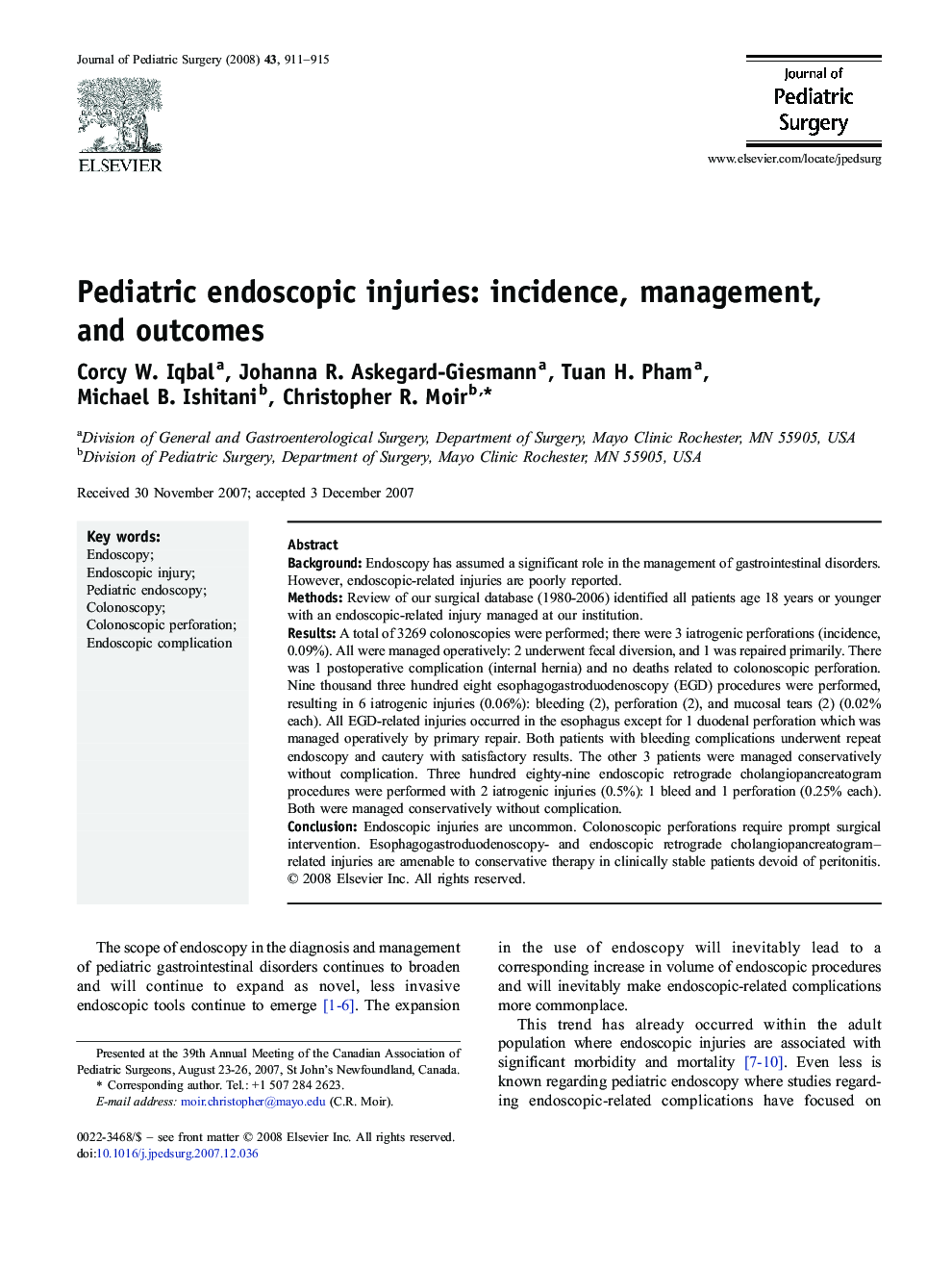| Article ID | Journal | Published Year | Pages | File Type |
|---|---|---|---|---|
| 4159358 | Journal of Pediatric Surgery | 2008 | 5 Pages |
BackgroundEndoscopy has assumed a significant role in the management of gastrointestinal disorders. However, endoscopic-related injuries are poorly reported.MethodsReview of our surgical database (1980-2006) identified all patients age 18 years or younger with an endoscopic-related injury managed at our institution.ResultsA total of 3269 colonoscopies were performed; there were 3 iatrogenic perforations (incidence, 0.09%). All were managed operatively: 2 underwent fecal diversion, and 1 was repaired primarily. There was 1 postoperative complication (internal hernia) and no deaths related to colonoscopic perforation. Nine thousand three hundred eight esophagogastroduodenoscopy (EGD) procedures were performed, resulting in 6 iatrogenic injuries (0.06%): bleeding (2), perforation (2), and mucosal tears (2) (0.02% each). All EGD-related injuries occurred in the esophagus except for 1 duodenal perforation which was managed operatively by primary repair. Both patients with bleeding complications underwent repeat endoscopy and cautery with satisfactory results. The other 3 patients were managed conservatively without complication. Three hundred eighty-nine endoscopic retrograde cholangiopancreatogram procedures were performed with 2 iatrogenic injuries (0.5%): 1 bleed and 1 perforation (0.25% each). Both were managed conservatively without complication.ConclusionEndoscopic injuries are uncommon. Colonoscopic perforations require prompt surgical intervention. Esophagogastroduodenoscopy- and endoscopic retrograde cholangiopancreatogram–related injuries are amenable to conservative therapy in clinically stable patients devoid of peritonitis.
